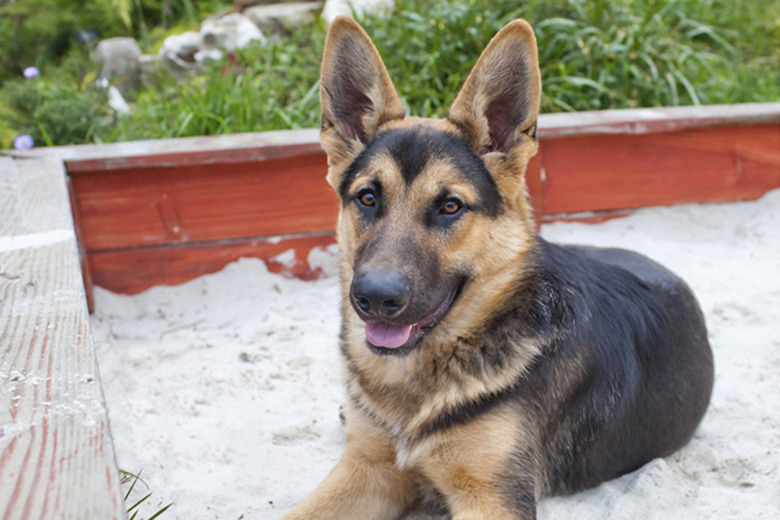Toys & Activities For Dogs That Like To Burrow
Some little diggers enjoy nothing more than burrowing under the covers at bedtime — as well as uprooting everything that you planted in the garden. Expecting a digging dog to give up this habit may be a lost cause, but you can re-direct his behavior so that it is less destructive. Whether your pooch lives outside or inside, you can provide toys that will safely satisfy his burrowing instincts.
Why Dogs Burrow
Burrowing in the ground is a survival technique in the wild. Wolves and their wild dog descendants dig dens to keep warm in the winter and cool in the summer and as protection from the elements and predators, especially when they are raising their young. They also burrow in order to bury any left-over food to prevent other animals from finding it and as an emergency stash. Some dogs such as dachshunds, beagles and some terriers are more prone to burrowing behaviors than other breeds because for generations they were used to flush game and pests out of their underground burrows. Any dog, though, can give in to an instinctive urge to dig if he becomes stressed or bored. Some even do it just for fun.
Outside Activities
Designate a spot in your yard as a digging pit for your dog. Till the dirt and add some sand. Create a border with paving bricks or landscape timbers to cue your dog that this is his area. Train your dog to use this area by playing with him and burying toys for him to dig up. Good toys for him to bury include chew bones, old shoes and baseballs. Just don't be surprised if you need to retrieve the odd shoe or missing newspaper from the digging pit. Another option, if your budget allows, are agility tunnels. Though he won't be digging in these, they'll probably have him running in circles with excitement. Burrowers get a thrill out of scurrying through enclosed spaces.
Inside Activities
When dirt is not available, many burrowers substitute blankets, couch cushions and laundry baskets to stash their goodies. You can re-direct their behavior by providing them with their own inside "den". Place an old sleeping bag or even several old sweat shirts in their bedding area. Train them to use only this area for burying by playing with them and hiding their toys there. Non-stuffed plush toys are a good choice and so are chew toys. Another idea for when you're not around is to hide an interactive toy in your dog's blankets. These include toys in which treats can be hidden, squeaky toys, toys that have a hard rubber outer shell and crackly plastic inner shell, and toys that are motion or sound activated. Limit your dog's choices to one or two at a time to prevent him from hiding extras in off-limit hiding places.
Digging for Plushies
If you would rather limit your dog's burrowing behavior to just a toy or two, there are several models of plush toys that are shaped like hollow trees and other interesting objects. These come with tiny stuffed animals (usually sqeaky) that can be hidden inside. Your dog may find that digging out these little critters satisfies his urge to burrow. There are replacement critters available so that you do not need to buy a whole new toy if your dog gets chew happy and destroys the little critters he digs out. Simply search online and you'll find many varieties to choose from including sheep, squirrels, little puppies or even elves and a miniature Santa for your dog to play with.
By Jenny Newberry
References
Web MD:Why Dogs Dig and What You Can Do
The Humane Society of the United States: Dig This: How to Get Your Dog to Stop Digging
Dog Time: The Dirt on Dogs Who Dig
About the Author
Jenny Newberry, a former teacher with 25 years of experience, is a professional writer and photographer and holds a B.S. and a M.Ed. in elementary and special education from the University of South Alabama. She is also a history buff, praise and worship pianist, pet enthusiast, avid crafter and hobby gardener.
